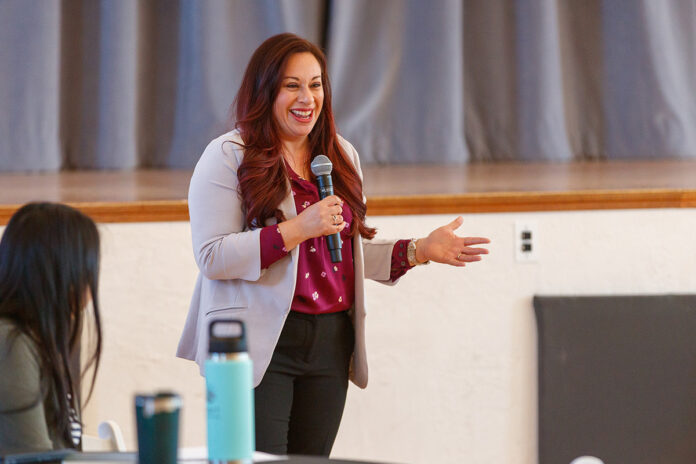The Greater Cottonwood Chamber of Commerce hosted a “Lunch and Learn” event on water resilience in the Verde Valley at the Cottonwood Community Clubhouse on Wednesday, Feb. 28, which included representatives from The Nature Conservancy, Salt River Project, Sonoran Wines and Business for Water Stewardship.
Selena Pao, Verde River project manager at The Nature Conservancy, discussed Verde River conservation. The Nature Conservancy has a community-based program that focuses on ensuring a healthy river habitat for the Verde River and its tributaries by encouraging the modernization of agricultural infrastructure with more efficient irrigation systems, growing crops such as wheat and barley that require little water, restoring landscapes, using science to monitor the river and protecting the aquifers that feed the river. Pao also discussed how surface water use rights for the Verde River were first established in the 1860s.
The Nature Conservancy works with rural communities to improve stormwater management and increase effluent use. Pao said that rural communities across the Verde River watershed secure water from aquifers connected to the Verde River and its tributaries and that urban land management decisions affect water quality and timing of runoff. She noted that effluent reuse at the Camp Verde Sports Complex has reduced groundwater demand by a total of 17 million gallons so far in the program.
Pao said that stormwater is one of the last water sources in Arizona that is not professionally managed. The Cottonwood Public Library has a stormwater management project that creates an opportunity for recharge and flooding mitigation, which began in 2023.
Conservation easements can also be used to limit certain types of land uses while the land remains in private ownership. Pao said that this practice can be used to provide permanent protection for ranch and farmlands and that Hauser & Hauser Farms in Camp Verde is an example.
Elvy Barton, a water and forest sustainability manager for the Salt River Project, said that the greatest threat to the water supply is catastrophic wildfire. While the fire season typically runs from the end of April to the end of September, Barton said that the fire season is ongoing and said that it is unprecedented due to an explosion of overgrowth in forests, leading to unhealthy conditions that impair watershed health and function.
SRP aims to achieve a total of 5 billion gallons of water conservation by 2035. Barton explained that SRP recently installed water measuring devices at the Phoenix Zoo to detect leaks and determine if they were using water efficiently or not. SRP was able to detect a leak of 30 gallons per minute and provide a list of recommendations to improve irrigation and water efficiency.
Demion Clinco, of Sonoran Wines, located in Cochise County, discussed the decline of groundwater storage and the role it plays in rural Arizona. Clinco said that Arizona could become one of the great wine centers of the U.S. but that the landscape is changing and recent events have shaken his confidence in water security in rural Arizona.
Clinco said that there is unregulated pumping of groundwater in the Wilcox basin by corporations, most of which are based in other states or countries, and that 1.3 million rural residents are living without groundwater protections.
“If there was ever an emergency alarm going off, this is it,” Clinco said. He added that groundwater levels in the Wilcox basin are now below the average depth of wells, which is 409 feet, and that more drilling is neither practical nor affordable.
Clinco further made the case that groundwater reliability is not a luxury but a necessity, especially for small businesses, with broader implications for Arizona’s economy and the wellbeing of its residents, and called for changing policy and law on groundwater regulation.



